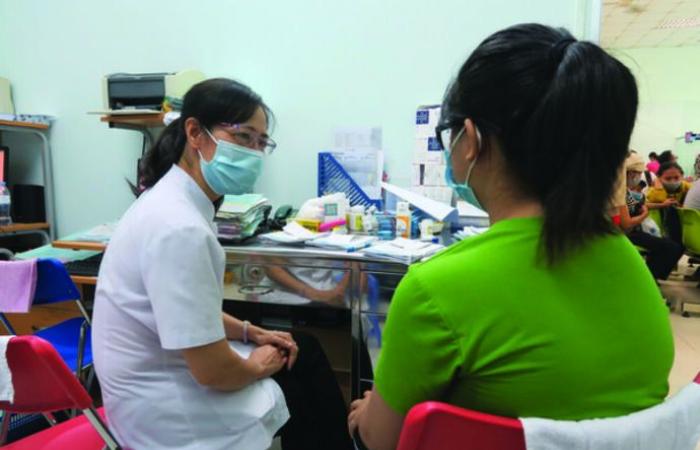HIV/AIDS: a continuing fight against the spread among young people and the challenges of prevention
>> AIDS: Ho Chi Minh City pilots the TelePrEP model
>> More than 60,000 people have used HIV pre-exposure prophylaxis
>> Towards the end of the HIV/AIDS epidemic in 2030
>> Nghê An: a woman serving the fight against AIDS
>> Vietnam, a bright spot in the fight against HIV/AIDS
| Medical consultation on HIV/AIDS in Ho Chi Minh City. |
| Photo : VNA/CVN |
On the occasion of National HIV/AIDS Action Month and World AIDS Day, alarming data was released by the Department of HIV/AIDS Prevention and Control of Vietnam. Nearly 70% of new cases are recorded in southern areas, particularly in the Mekong Delta, the South-Eastern provinces and Ho Chi Minh City. A worrying figure reveals that around 40% of new infections concern young people aged 15 to 25, some of whom are still in school.
HIV transmission has evolved over the years. While previously it was mainly through blood, today it is mainly linked to sexual intercourse. The groups most at risk now include men who have sex with men (MSM) and transgender people.
At the same time, risky behaviors, such as the use of synthetic drugs, “chemsex” practices and group sex, are on the rise. These behaviors not only promote the spread of HIV, but also that of sexually transmitted diseases (STDs) and hepatitis B and C, thus burdening the public health system.
In historically less affected provinces, infection cases are increasing, highlighting the growing scale of the problem. Persistent stigma and lack of knowledge about HIV still make it difficult for many people to access testing and treatment services.
Redouble efforts for better prevention
Faced with this situation, Vietnam has undertaken promising initiatives. More than two million HIV tests have been carried out, and more than 176,000 people are currently receiving antiretroviral (ARV) treatment. Innovations, such as pre-exposure prevention (PrEP) and extended methadone treatment, have been extended to various at-risk groups.
The country is also investing in digital transformation to optimize epidemic management, with systems like HIV-INFO and HMED. These efforts have reduced new infections by almost 60% since 2010, progress well above regional and global averages.
 |
| UNAIDS Country Director Raman Hailevich (standing). |
| Photo: SKDS/CVN |
However, challenges remain numerous. In addition to the rejuvenation of infections, discrimination continues to hinder progress. According to UNAIDS Country Director Raman Hailevich, ensuring citizens’ basic rights is essential to eradicate the epidemic.
Mobilizing for an AIDS-free future
This year’s World AIDS Day theme, “Protect Rights, End the Epidemic,” highlights the importance of equal access to care. This is not only about raising awareness, but also encouraging concrete actions to remove barriers to prevention and treatment.
The media plays a crucial role in this fight. By telling the human stories of people living with HIV, they can help break down stereotypes, foster empathy and reduce discrimination. Providing information about screening, treatment and prevention services is another essential way to help in this battle.
The goal is clear: a future where every person, regardless of their status, has the opportunity to live fully, without fear or prejudice related to HIV.
Dan Thanh/CVN






